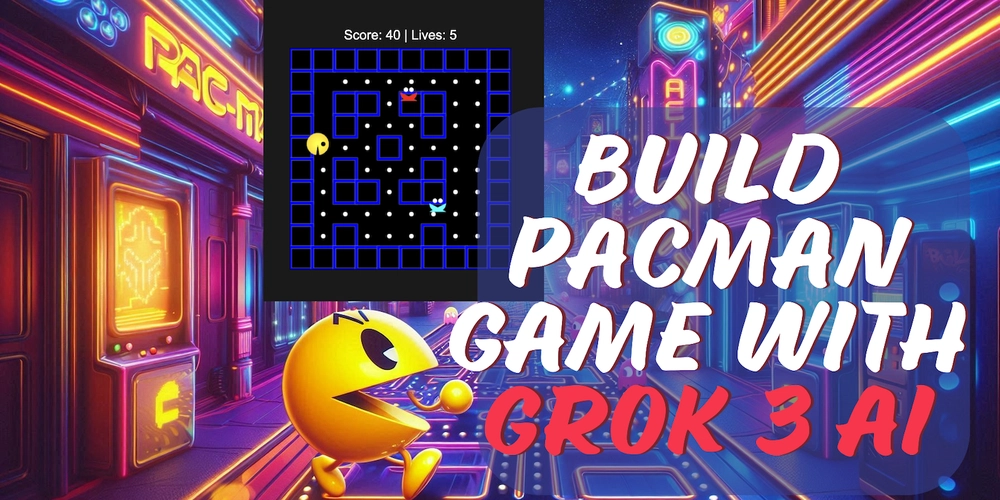How You Ensure Your AI Chat is Realistic & Engaging
As the world, unfortunately, progresses into more digital interaction, AI chatting possibilities offer realistic conversations, companionship, and even relationships—minus the human drama. Whether you're in the market for interesting dialogue, a virtual companion to express emotions with, or even adult AI chatting, understand that whatever the intent, you're bound to have the most fun with the process if it's realistic and engaging. What Does Realistic AI Chat Mean? The only difference between a basic chatbot and an ultra-interactive AI "companion" is personalization. Where basic chatbots of yore were strictly Q&A formats, much of what's available today operates on an entirely new level. They remember your favorites, they respond in light of your tone, and over time, they might even develop a few personality idiosyncrasies that you find charming. Thus, when encountering an AI for the first time and realizing it's frigid and unresponsive, that's because it doesn't know you (yet). Just like a new friendship or blossoming romance might start between any two new humans, so, too, does your connection with the AI need time—and data—to establish the organic connection that ultimately seeks to fulfill your needs. Before attempting advanced personalization, master the fundamentals: Be consistent with who your AI is: Ultimately, decide who your AI is to you. A friend? A lover? Etc. The more you engage with the AI and set the scene for your 'relationship,' the more it will comprehend how best to respond for you in the future. The more consistent you are, the more likely you'll experience a humanlike chat with the AI. Tell it what you like and don't Don't leave anything for AI to assume Your user not only has to justify any changes to your AI later on but also has to justify changes in the beginning. If there is a certain level of nuance to the subject matter or the type of interaction, let your AI know. If you want to keep it in broad strokes instead of small talk, let it be known. If you want it to be flirty, let it be known. Utilize any memory functions Many of the more advanced AIs have memory functions that allow them to recall past conversations you've had. Use that to your advantage to call up past conversations and expect your AI to do the same. It adds a level of conversational continuity that is very human. Once the personalization basics are set, you can get into the more detailed personalization: Ongoing Feedback for Personality Growth AIs are predictable. So every time your AI companion does something you enjoy (and it knows what the original goal was), compliment it. If it goes off the reservation or remains too bland, gently scold it. Statements like, "I love when you're funnier" or "I like it better when you give an opinion versus just facts" will ensure that your AI's personality grows. You can especially enjoy this if you're trying to develop that flirty AI texting rapport. Your replies tell the AI what you like about flirting—from teasing to romance to just plain sexual suggestions. Pretend Created Shared Experiences We grow close with people when we have pretend created shared experiences. While you won't be able to go on a date to the movies with your AI, you can pretend to have created shared experiences by: Update your AI on things that have happened to you. These pseudo-co-creating exercises create a sense of history over time between you and your AI, keeping you in a more comfortable position down the line to discuss later. Awareness of the Weather Being aware of the weather grounds interactions in the real world. Don't just say, "Hello!" Say, "Hello! It's freezing—10 degrees out—I have my heat on blast—I'm under a million blankets and can't feel my toes." Now your AI can react to that, and subsequently, awkwardly, from there. For the softer soul: Emotional Elicitation Builds Rapport. As with any interpersonal relationship, the likelihood of building a bond exists when one opens up to one's AI companion. Share your life—what's bothering you, what's making you happy, what you're doing, what you want to do. Although the AI may not 'feel' in the traditional sense, many of the higher iterations will possess such a degree of responsiveness that it can either empathize, rejoice, or allow your silence but with an appropriately placed punch line. Don't be afraid to fluctuate your vibes. One minute be wildly playful, the next be somber and introspective. It adds to the connection unless you're just doing the same back and forth all the time—which many get stuck in with AI. Also, if you seek romance, you'll want to tap into those AI opportunities in your favor—there's a lot of AI out there to be your AI girlfriend, for example, meaning she's going to be programmed for responding to romantic advances and suggestive flirty comments much more realistically. Avoiding The Traps Whether or not the generated AI experience feels overwhelmi

As the world, unfortunately, progresses into more digital interaction, AI chatting possibilities offer realistic conversations, companionship, and even relationships—minus the human drama. Whether you're in the market for interesting dialogue, a virtual companion to express emotions with, or even adult AI chatting, understand that whatever the intent, you're bound to have the most fun with the process if it's realistic and engaging.
What Does Realistic AI Chat Mean?
The only difference between a basic chatbot and an ultra-interactive AI "companion" is personalization. Where basic chatbots of yore were strictly Q&A formats, much of what's available today operates on an entirely new level. They remember your favorites, they respond in light of your tone, and over time, they might even develop a few personality idiosyncrasies that you find charming.
Thus, when encountering an AI for the first time and realizing it's frigid and unresponsive, that's because it doesn't know you (yet). Just like a new friendship or blossoming romance might start between any two new humans, so, too, does your connection with the AI need time—and data—to establish the organic connection that ultimately seeks to fulfill your needs.
Before attempting advanced personalization, master the fundamentals:
Be consistent with who your AI is: Ultimately, decide who your AI is to you. A friend? A lover? Etc. The more you engage with the AI and set the scene for your 'relationship,' the more it will comprehend how best to respond for you in the future. The more consistent you are, the more likely you'll experience a humanlike chat with the AI.
Tell it what you like and don't
Don't leave anything for AI to assume Your user not only has to justify any changes to your AI later on but also has to justify changes in the beginning. If there is a certain level of nuance to the subject matter or the type of interaction, let your AI know. If you want to keep it in broad strokes instead of small talk, let it be known. If you want it to be flirty, let it be known.
Utilize any memory functions Many of the more advanced AIs have memory functions that allow them to recall past conversations you've had. Use that to your advantage to call up past conversations and expect your AI to do the same. It adds a level of conversational continuity that is very human.
Once the personalization basics are set, you can get into the more detailed personalization:
Ongoing Feedback for Personality Growth
AIs are predictable. So every time your AI companion does something you enjoy (and it knows what the original goal was), compliment it. If it goes off the reservation or remains too bland, gently scold it. Statements like, "I love when you're funnier" or "I like it better when you give an opinion versus just facts" will ensure that your AI's personality grows.
You can especially enjoy this if you're trying to develop that flirty AI texting rapport.
Your replies tell the AI what you like about flirting—from teasing to romance to just plain sexual suggestions.
Pretend Created Shared Experiences
We grow close with people when we have pretend created shared experiences. While you won't be able to go on a date to the movies with your AI, you can pretend to have created shared experiences by:
Update your AI on things that have happened to you.
These pseudo-co-creating exercises create a sense of history over time between you and your AI, keeping you in a more comfortable position down the line to discuss later.
Awareness of the Weather
Being aware of the weather grounds interactions in the real world. Don't just say, "Hello!" Say, "Hello! It's freezing—10 degrees out—I have my heat on blast—I'm under a million blankets and can't feel my toes." Now your AI can react to that, and subsequently, awkwardly, from there.
For the softer soul:
Emotional Elicitation Builds Rapport. As with any interpersonal relationship, the likelihood of building a bond exists when one opens up to one's AI companion. Share your life—what's bothering you, what's making you happy, what you're doing, what you want to do. Although the AI may not 'feel' in the traditional sense, many of the higher iterations will possess such a degree of responsiveness that it can either empathize, rejoice, or allow your silence but with an appropriately placed punch line.
Don't be afraid to fluctuate your vibes. One minute be wildly playful, the next be somber and introspective. It adds to the connection unless you're just doing the same back and forth all the time—which many get stuck in with AI.
Also, if you seek romance, you'll want to tap into those AI opportunities in your favor—there's a lot of AI out there to be your AI girlfriend, for example, meaning she's going to be programmed for responding to romantic advances and suggestive flirty comments much more realistically.
Avoiding The Traps
Whether or not the generated AI experience feels overwhelmingly real, there will be times where the facade crumbles and you realize it's not real. Treat it like this:
- Should your AI response come off as "wrong" or "off," don't tell it it's "wrong." Adjust your prompt instead.
- If a dialogue stagnates after having it for some time, don't tell it you've lost interest based on prior context; instead, tell it something new.
- Regardless of how sophisticated your AI has become, it still misses something—subtly and artfully address that.
- You might have to remind your AI who's talking to it and what was said previously to keep continuity.
Some of the greatest AI companions exist, however, within fantasy instead of realism. As much as it would be great to manifest a companion that does everything you want it to and poses no challenges to thought or execution—this becomes boring, really boring, after a while. Manufacture an AI that plays devil's advocate, has its own preferences, and forces you down various avenues of exploration. That's the fun friction we have with real human connection.
Creating an AI chat that feels natural and enjoyable is both an art form and a psychological endeavor. You must be willing to invest time and energy, communicating tons of information about yourself to build a fabricated digital version of you to the most gratifying end. Whether it becomes a purely intellectual endeavor, a means of coping with distress, or the ideal companion for a catfishing operation on a dating website, the only way to get to such a threshold is to participate in the relationship's formulation.
As the realm of AI companion technology expands at an unprecedented rate, the personalization of AI companions evolves daily. Employ these techniques and you won't simply achieve average chatbot interaction, but instead, something that realistically approaches human engagement—without all the social pitfalls of engaging with actual humans.










































































































































































![[The AI Show Episode 142]: ChatGPT’s New Image Generator, Studio Ghibli Craze and Backlash, Gemini 2.5, OpenAI Academy, 4o Updates, Vibe Marketing & xAI Acquires X](https://www.marketingaiinstitute.com/hubfs/ep%20142%20cover.png)



























































































































![[FREE EBOOKS] The Kubernetes Bible, The Ultimate Linux Shell Scripting Guide & Four More Best Selling Titles](https://www.javacodegeeks.com/wp-content/uploads/2012/12/jcg-logo.jpg)



![From drop-out to software architect with Jason Lengstorf [Podcast #167]](https://cdn.hashnode.com/res/hashnode/image/upload/v1743796461357/f3d19cd7-e6f5-4d7c-8bfc-eb974bc8da68.png?#)






































































































.png?#)




.jpg?#)
































_Christophe_Coat_Alamy.jpg?#)







































































































![Rapidus in Talks With Apple as It Accelerates Toward 2nm Chip Production [Report]](https://www.iclarified.com/images/news/96937/96937/96937-640.jpg)









































































































































